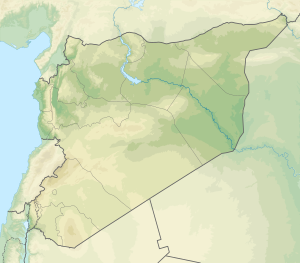Battle of Marj Dabiq
| Battle of Marj Dabiq | |||||||
|---|---|---|---|---|---|---|---|
| Part of Ottoman–Mamluk War (1516–17) | |||||||
|
|||||||
| Belligerents | |||||||
|
|
Mamluk Sultanate | ||||||
| Commanders and leaders | |||||||
| Selim I | Al-Ashraf Qansuh al-Ghawri † | ||||||
| Strength | |||||||
| 65,000 soldiers, 50 cannons | 80,000 | ||||||
| Casualties and losses | |||||||
| 13,000 | 72,000 | ||||||
Coordinates: 36°32′33″N 37°16′22″E / 36.542398°N 37.272908°E
The Battle of Marj Dābiq (Arabic: مرج دابق, meaning "the meadow of Dābiq"; Turkish: Mercidabık Muharebesi) was a decisive military engagement in Middle Eastern history, fought on 24 August 1516, near the town of Dabiq, 44 km north of Aleppo (modern Syria). The battle was part of the 1516–17 war between the Ottoman Empire and the Mamluk Sultanate, which ended in an Ottoman victory and conquest of much of the Middle East, bringing about the destruction of the Mamluk Sultanate. The Ottoman victory in this battle gave Selim's armies control of the entire region of Syria and opened the door to the conquest of Egypt.
Sultan Al-Ashraf Qansuh al-Ghawri spent the winter of 1515 and the spring of 1516 preparing an army he proposed leading to the disturbed confines of Asia Minor. Before beginning the march, an embassy arrived from Selim I promising in friendly terms to agree to Mamluk requests to appoint an Egyptian vassal to the Beylik of Dulkadir – a long-standing buffer state between Mamluks and Ottomans – and to reopen the frontier to the traffic of goods and slaves. On 18 May 1516 Al-Ashraf Qansuh al-Ghawri set out from Cairo with a large force (reportedly 20,000 knights), appointed well in all respects but artillery.
...
Wikipedia

